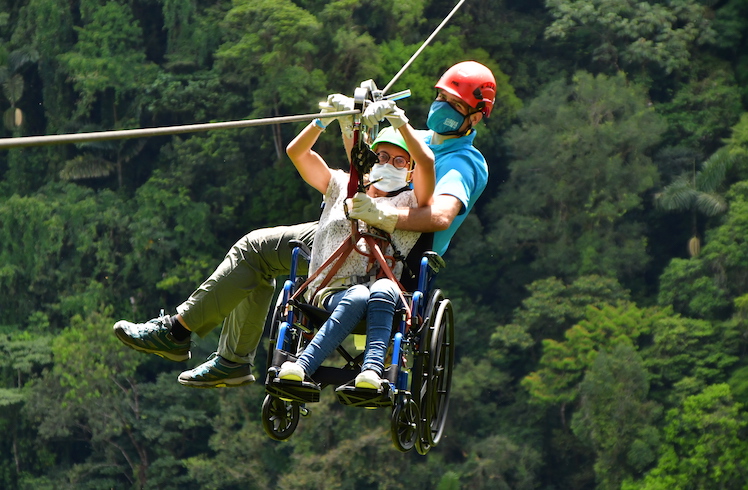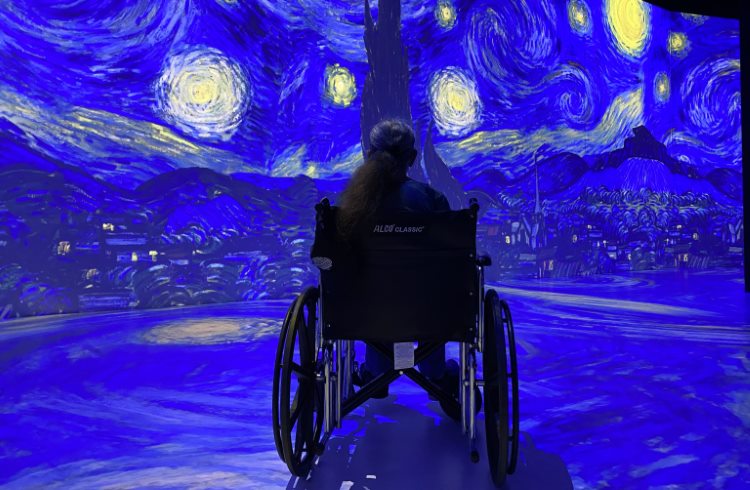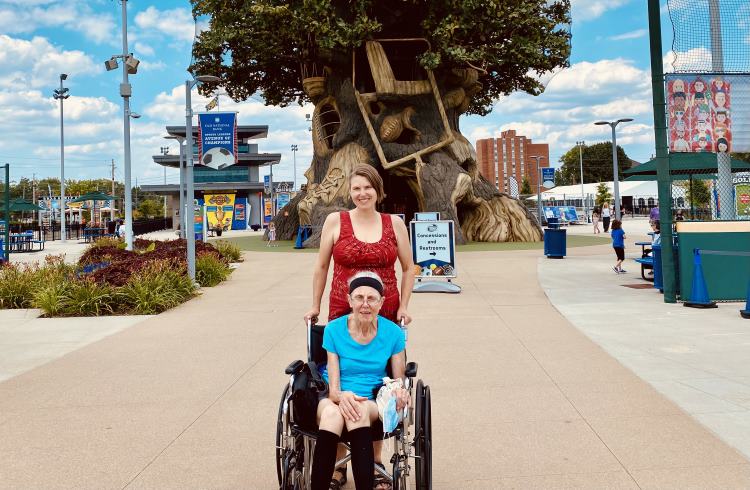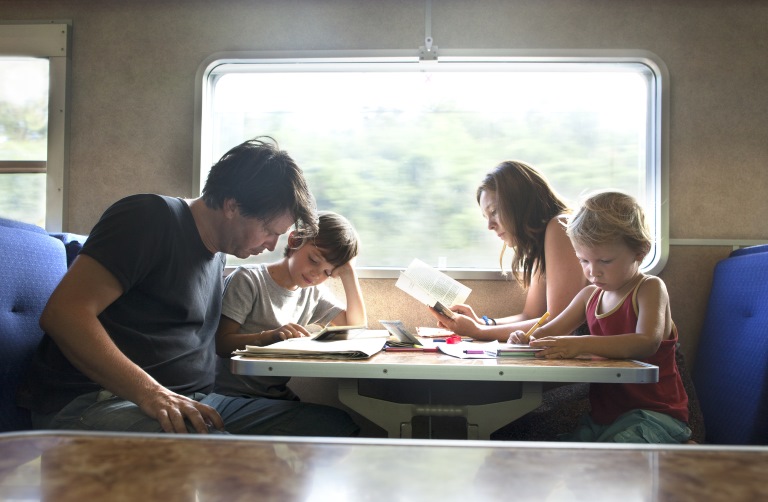How to Plan a Trip With a Disabled Family Member
Planning a family trip, that includes someone with a disability, takes time and patience – but it’s worth it. Here are some tips for how to get started.
 Photo © Il Viaggio
Photo © Il Viaggio
Family vacations can be hard regardless of who will be joining. On top of trip-planning logistics and unexpected snafus, anytime there are diverse personalities, interests, and priorities, there are bound to be challenges. To many people, the thought of planning a trip that would also be suitable for someone with a disability would be not only challenging, but also anxiety-provoking for everyone involved.
My mother was diagnosed with Parkinson’s five years ago. Initially, her speech was slightly impaired, and she walked unsteadily, but she was still able to move around independently, board airplanes unassisted, climb stairs, and navigate cities without a walker or wheelchair. As the disease slowly progressed, I worried she wouldn’t be able to travel anymore because of how poorly most places accommodate disabled visitors. When I took on partial caregiver responsibilities for her this year, the idea of bringing her on our multi-day family vacation was too stressful to think about – I figured I’d probably have to put her in an overnight care facility instead of bringing her with us. I was wrong. Here’s what I learned.
- Be patient
- Start small
- Choosing where to go
- Accessible international travel
- Choosing accommodation for disabled travelers
- Navigating airports with a disabled traveler
- Creating lifelong memories
Be patient
Nobody wants to let down their loved ones. If I’m being completely honest, traveling with my mom has been the most difficult, detail-oriented, patience-requiring travel I’ve ever done. Disability activists around the world, such as those supported through the Disability Rights Fund, are working to create inclusive spaces and policies so that persons with disabilities can experience the world on an equal basis as others. Currently, however, most of the world is not set up for people with disabilities, so it’s inevitable that you’ll encounter challenges. A certain amount of trial and error is to be expected, so do as much research as you can but don’t get too frustrated when things don’t go perfectly.
Start small
Beginner travelers make new-traveler mistakes, but experienced travelers can also make mistakes when they’re in new situations. Although I’ve been a regular solo traveler for 17 years, when I first began traveling with my mom, I didn’t know where to start or where to turn. Terrified of something going wrong away from home, we both slowly got comfortable with the idea of traveling – by starting small.
We started with small trips around town – lunch with a friend or to a concert in the park – and experimented with her level of comfort using a walker versus a wheelchair. This experimentation proved crucial; not only did it build our confidence, but it also established a baseline. We knew what my mother was comfortable with, what she struggled with, what obstacles we should be aware of on the trip, and what accommodation to ask for.

Choosing where to go
Last spring, for our first big trip since her condition deteriorated, we decided to visit Indianapolis, which was driving distance from my family’s home in Milwaukee. A road trip vacation meant we could throw everything we needed in the rooftop carrier and make frequent stops at visitor centers, which usually have bathrooms that are accessible for people with disabilities. I considered my mother’s interests (museums and theater) and called around to see which facilities could accommodate us. In Indianapolis, all the major museums provided free wheelchairs and the city even has an Accessibility Guide, which helped us identify potential activities that the whole family could enjoy.
In the United States, the gold standard for accessibility is ADA-compliant design, meaning the walkways, rooms, bathrooms, etc. were designed in compliance with the Americans with Disabilities Act. Keep in mind, however, that even the most thoughtfully designed places won’t necessarily eliminate all potential challenges (more on that later).
Accessible international travel
International travel is also possible for disabled travelers, but some destinations make the experience a lot easier and more inclusive. Costa Rica has been a global leader in terms of accessible travel, requiring every hotel to have accessible rooms. Many Costa Rican operators, such as Il Viaggio, are making their most popular activities accessible to travelers with a variety of physical disabilities. So-called “sensitive” walking and hiking trips are available for vision-impaired visitors, as are surf lessons. Amphibious wheelchairs are available around the country, as well as surfing experiences, hanging bridges, and zip line and rafting adventures for travelers who use wheelchairs or who have limited mobility.
Travelers who use wheelchairs should look into Wheel the World, which provides global travel resources and trip planning support. While its flying tips are mostly geared at travelers in wheelchairs, some of the tips apply to travelers with a variety of disabilities.
Airline bathrooms are notoriously cramped, but according to Alvaro Silberstein, one of Wheel the World’s co-founders, if you fly on a Boeing 787, the flight attendants can connect two bathrooms with a special door, which makes the space big enough to get a wheelchair inside. Even if a wheelchair isn’t being used, having the additional space would be extremely helpful when a caregiver needs to accompany the traveler into the bathroom.

Choosing accommodation for disabled travelers
Consider what your main challenges will be regarding accommodation – are stairs a problem? Loud noises? Cramped spaces? – then work to minimize those potential challenges. Since my mother wouldn’t be able to join all the activities on the trip (such as lengthy walking and biking tours), I made sure the B&B where we stayed had a small balcony in our room and a shared patio where she could relax while she was alone. Though she certainly could have just read in bed in any hotel, being able to read outside on a warm summer afternoon made the experience more of a vacation for her.
Keep in mind, no two people are alike and the same goes for travelers with disabilities. Travelers who are visually or hearing-impaired, or who have multiple sclerosis or Parkinson’s, are all going to have their own unique challenges. Just because a hotel is ADA-accessible doesn’t mean it will fit your needs perfectly and just because a museum offers a wheelchair doesn’t mean the visiting process will be seamless.
Even though my mother and I stayed in an ADA-accessible room, we still encountered challenges. The bed was too high for her to comfortably get in and out of (a frequent problem for many travelers with disabilities), so the hotel made up the daybed for her and I slept in the main bed. In the bathroom, there was a large open area next to the toilet that could accommodate a wheelchair, but my mother doesn’t use a wheelchair in the bathroom, and an additional rail that she could use to support herself would have been more helpful. Now I know to call ahead and ask about rail supports in the bathroom.
Jennifer Laszlo Mizrahi, the founder of Respect Ability, says that some hotels and restaurants that claim to be ADA-accessible really aren’t, so it’s best if someone familiar with accessibility requirements can check them out in advance to verify accessibility. When it’s not possible to visit in-person (for instance, when planning an out-of-state or international trip), reading online reviews and speaking with staff on the phone are crucial.
Also, be aware that transitioning from a hotel to a car to a museum or restaurant takes a lot more time – and patience – when you’re using a walker or wheelchair (especially if borrowing the wheelchair from the venue). The same goes for visits to the bathroom.
Navigating airports with a disabled traveler
Mizrahi also suggests speaking with airline and airport staff to see how they can make the experience smoother. “During TSA screening and while in boarding lines, if you let staff know a member of your group would benefit from moving to the front of the line or a quieter line, they can usually help.” Some airports have recently introduced bathrooms that not only accommodate wheelchairs but also have adult-size changing tables for adults that rely on a caregiver.
Creating lifelong memories
When planning (and enjoying!) an accessible family trip, patience is needed but I promise you, the payoff is absolutely worth it. Since my mother’s condition has made it more difficult for her to participate in family functions such as holiday parties or attending her grandchildren’s sporting events, it was important to me that she be able to join family vacations. Not only would these multi-generation trips be enjoyable for her, they would also become lifelong memories me, my sister, and our kids.
While I thought my mother would most enjoy the museums, what mattered most to her were the small things – seeing her grandkids playing at the children’s museum and making friends with kids at neighboring tables when we went out to dinner.
She told me that she was really scared to go on the trip but feels encouraged that nearly every place we visited was able to make arrangements for her. “Parkinson’s has changed my life and I worried I’d be cloistered away in my home for the rest of my life. Now I’m going out like a normal person, doing normal things on vacation,” she told me. “It just felt so good to be out with my family.”



No Comments